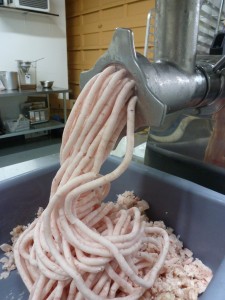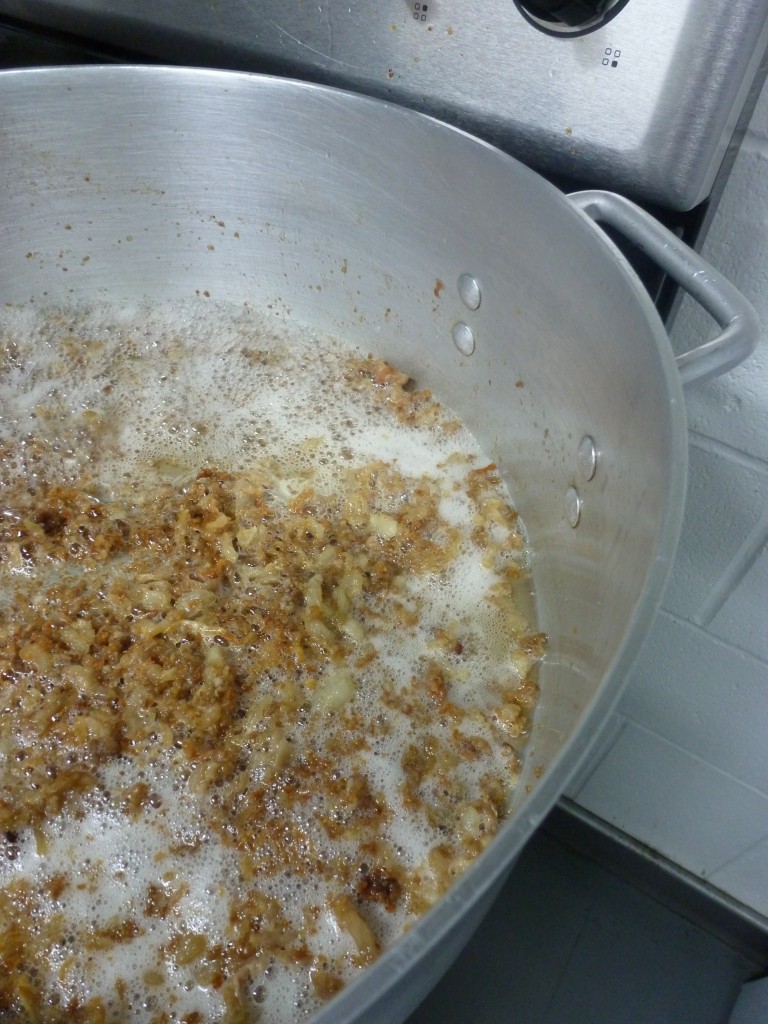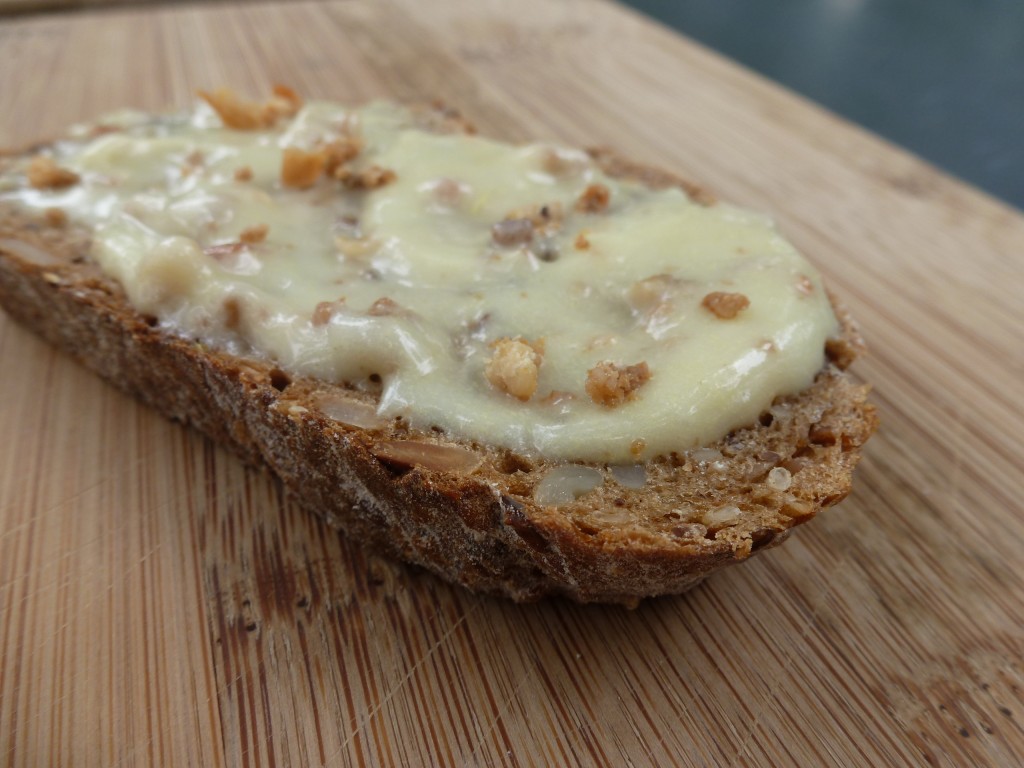 I’ve rendered animal fat many times, but I recently learned that I was doing it wrong. Or rather, not in the most effective manner.
I’ve rendered animal fat many times, but I recently learned that I was doing it wrong. Or rather, not in the most effective manner.
Rendering is the process of turning raw, fatty tissue from animals into pure fat. We render pieces of raw pork fat to get lard, and raw beef fat to get tallow. I used to quickly cut up, say, pork leaf lard, or beef suet, or duck breasts, then throw them in a pot over low heat and leave them for several hours. This works, but I was always surprised by the low yield.
My exploration of an improved rendering method began last summer, in Austria, while eating at a Heuriger. I was served light rye bread with a spread called Grammelschmaltz. It was lard, studded with tiny, crunchy, porky bits called Grammeln (singular Grammel, or Grieben in the Bavarian dialect). They were delicious, but I had absolutely no idea what I was eating, so I asked several people around me how it was made. From one lady I got the following explanation, roughly: “You chop the pork fat, then cook it, then press it, then cook what’s left until it’s brown and crispy.” At first I thought this was just an explanation of how to make Grammeln, but now I realize it’s a description of a high-yield rendering process, and the Grammeln are merely by-products.
The fatty tissue we take from a pig, whether fatback (subcutaneous fat) or leaf lard (visceral fat) or fatty sections of the shoulder (inter- and intramuscular fat), are not pure fat. The pure fat is stored in cells lined with connective tissue. If we heat the tissue in large pieces, some of those cells may rupture and leach fat, but most will stay intact. To increase the yield of pure fat from the rendering process it makes sense to damage as many fat cells and possible before heating.
 Armed with this knowledge I stockpiled a few pieces of leaf lard in my freezer, intending to break them into tiny pieces with a box grater. This proved much, much harder than I expected, so I decided to cube the fat and run it through a grinder.
Armed with this knowledge I stockpiled a few pieces of leaf lard in my freezer, intending to break them into tiny pieces with a box grater. This proved much, much harder than I expected, so I decided to cube the fat and run it through a grinder.
The ground fat can then be put in a large pot. I add a bit of water to help distribute heat in the early stages. Then I leave the pot on medium low heat for a few hours to melt the fat, which runs out of the cells and into the bottom of the pan. The water evaporates.
Even once the fat has melted, there are several, solid bits left in the pot. These are shards of the connective tissue that once held the pure fat in a network. We can bump up our yield by pressing these solids to exude a bit more fat. I’m sure there are proper presses to do this, but I just put the solids in a china cap and press them with the back of a ladle.
The easiest way to store the rendered fat is to pour it into a tray and let it solidify in the fridge, then cut it into slabs, wrap in butcher paper, and store in the freezer.
Grammel: a by-product of rendering pork fat into lard. The remaining solids can now be crisped up to make Grammeln. I cook them over medium-high heat until they are golden amber, maybe ten minutes.

As many Austrians have told me, Grammeln make for very, very rustic eating: food for cold days or the end of a long hike. They tell me that it isn’t a very popular ingredient nowadays, but I have to say that when I was in Semmering I came across it frequently, mainly in the form of Grammelschmaltz: Grammeln mixed with a bit of lard, salted and spread on rye bread. This was my favourite incarnation, though I think the spread benefits from a bit of added mustard, for acidity and flavour. I also had Grammeln bound by a bit of lard, rolled into balls and stuffed into dumplings called Grammelknoedl. I even had it in chocolate bars – a salty, crunchy hit, kind of like how trendy chocolatiers might use sea salt.


The Grammeln sound really good like really crunchy bacon bits. I’m not sure that I I would like the lard but if I was hungry I am sure that would be preferable to some other options I might have to choose from. When you read books about prairie school houses it was quite common for students to bring bread spread with lard. Is Grammeln just the Austrian term for cracklings??
Hi Judy. Grammeln and crackling are different: grammeln are crispy bits of connective tissue while crackling is crispy skin.
I have a post on this, too, as it is a tradition within almost every Eastern European Country: Hungary, Serbia, Croatia, Bosnia, Poland, etc. Cvarci is what you need to search for on my site. Every family does it differently – and differently for different purposes. :) V
It’s too bad there’s no English word for it. We’ll have to invent one.